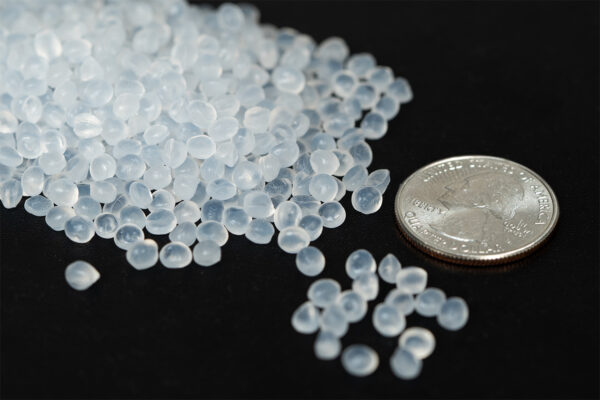Biological Capacity of the Advantage Bead Filter
The biological capacity of a filter is a measure of how readily it can convert ammonia into nitrite and then nitrite into nitrate (which is relatively non toxic to koi). This is accomplished by the development of nitrosomonas bacteria which breaks the ammonia down into nitrite. Then the development of nitrobacter bacteria which breaks down the nitrite into nitrate. The algae in a healthy pond will consume the nitrate as it produces oxygen.
The key to making this process work well is to provide a good environment for both the nitrosomonas and nitrobacter bacteria to grow. The Advantage Bead Filter was designed to create an excellent environment for this process to flourish in two ways. First by providing a large surface area for the bacteria to grow. Second, by providing a way to easily and efficiently remove completely any excess fish waste collected in the filter from the system on a regular basis.
1) An impressive surface area:
- The outer surface area of one of our media beads is approximately .0615 of a square inch.
- There are approximately 325 beads in one cubic inch (561,600 beads in one cubic foot)
- Therefore, one cubic foot of bead media wound have a surface area of approximately 34,538 square inches or 239 square feet.
Our Advantage 10 Filter contains approximately 3.5 cubic feet of bead media which would have a surface area of approximately 839 square feet for bacteria to grow on. Our Advantage 15 Filter contains approximately 5.0 cubic feet of bead media with a surface area of approximately 1,200 square feet for bacteria to grow.
2) Easy to Backwash: Because the Advantage filter is so easy to backwash (see backwash video) it allows you to easily clean the filter on a regular basis. We recommend, under normal fish loads, that you backwash the filter once a week in the summer and once every three weeks during the winter. This allows you to collect large amounts of fish waste and excess koi food and then remove it from your pond before it breaks down into ammonia and your filter bacteria has to deal with it.
Note: If you choose to over stock or over feed your pond you have the option of backwashing the filter more often if needed to keep the water quality perfect. Once the bacteria is well established (approximately 6 months) you can backwash the filter as often as you want and it will not effect the bacteria. To test this we set up the 3,500 gallon pond in our showroom with an automated head and had it backwash once a day for over a year. Throughout the whole year it performed perfectly. Even when we went from just a few koi left over from the previous year to completely over stocking the pond in December with our new from our buying trip to Japan the water quality stayed perfect.


